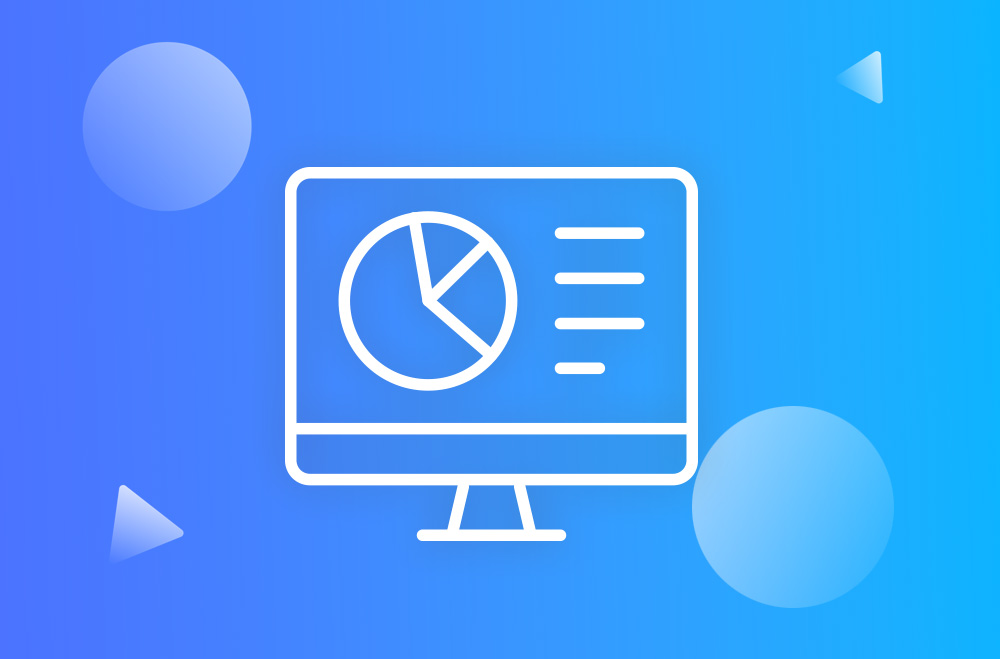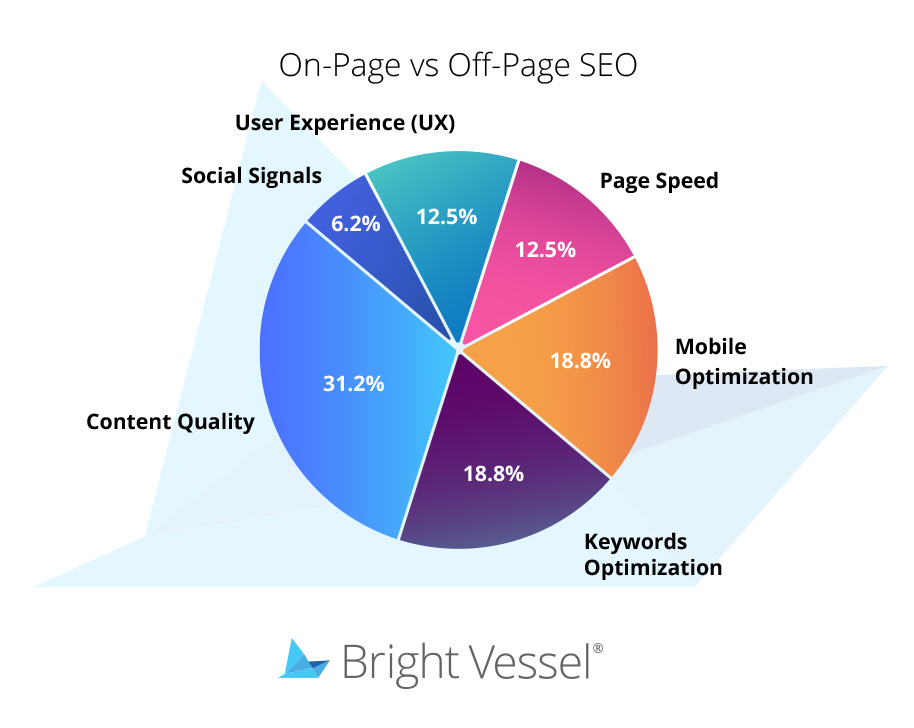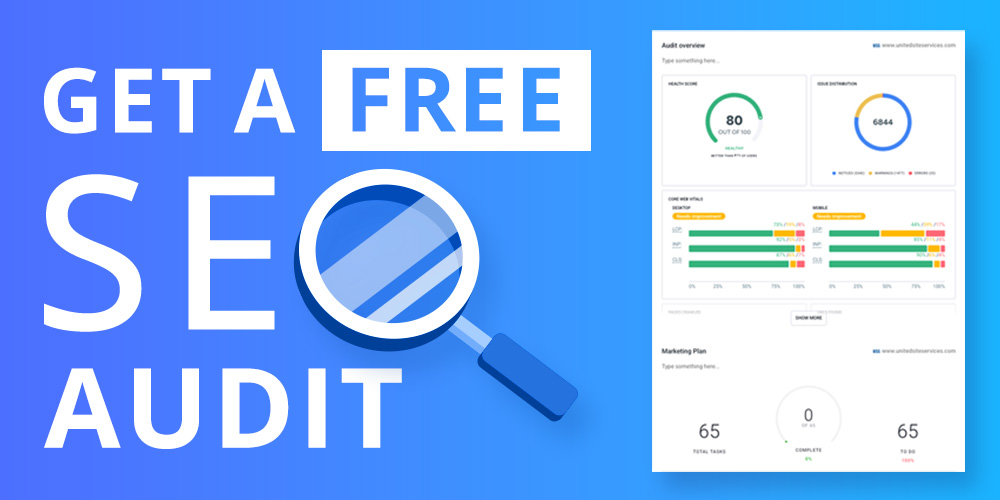

Update: June 2025
The original breakdown (35% On-Page vs 65% Off-Page SEO) was accurate for 2023 to 2024. It’s no longer the case.
Gli aggiornamenti dell'algoritmo di Google degli ultimi 18 mesi hanno riequilibrato la situazione. I fattori on-page ora hanno più peso grazie a:
Il sistema di contenuti utili privilegia le pagine che soddisfano appieno l'intento dell'utente
I dati strutturati e gli schemi contribuiscono alla visibilità e alla fiducia
Segnali UX (Core Web Vitals, interattività, accessibilità) che influenzano le classifiche
I collegamenti interni e l'autorità tematica influenzano la credibilità dell'intero sito
What’s the new ratio?
The split now leans closer to 40 to 50 percent On-Page, depending on the industry. On-page can even outweigh off-page for service businesses, healthcare, and finance. The chart below has been updated to reflect this shift.
I backlink sono ancora importanti. Ma non si può più vincere solo con i link.

High-quality, engaging content is the most significant slice of the SEO pie, making up approximately 25% of overall SEO effectiveness.
The quantity and quality of backlinks to your website account for about 20% of your SEO score, signaling trust and authority to search engines.
Strategic use of keywords contributes approximately 15% to the SEO pie, highlighting the importanza della comprensione e dell'abbinamento dell'utente search intent.
As mobile browsing prevails, mobile optimization's contribution to SEO effectiveness is about 15%.
Page speed affects esperienza utente and rankings, making up 10% of the SEO pie.
UX contributes to 10% of the SEO weight, emphasizing the need for a site that is easy to navigate and engage with.
Although a smaller slice, social signals account for around 5% of SEO effectiveness, reflecting the impact of social media interactions on SEO.

On-page SEO includes all the measures that can be taken directly within the sito web per migliorare la sua posizione nelle classifiche di ricerca. This includes content quality, keyword optimization, meta tags, headers, URL structure, and site speed.
Off-page SEO involves all activities outside the sito web per migliorare il suo posizionamento nei risultati di ricerca. The most significant factors here are backlinks, social signals, and other external factors.
These estimates reflect a consensus that off-page SEO, particularly backlinks, plays a more substantial role in determining a classifica del sito web than on-page factors. The rationale is that while on-page optimization is entirely under the site owner's control and can be seen as an essential requirement, off-page SEO represents external validation, which i motori di ricerca valutano molto positivamente la determinazione di un sito's authority and relevance.
The balance can shift based on the specific competitive landscape of a given search query, the current state of a website's SEO, and ongoing aggiornamenti agli algoritmi dei motori di ricerca. Therefore, these percentages should serve as a guideline rather than a fixed rule. On-page and off-page SEO are crucial for a successful SEO strategy, and neglecting either can hinder a website's potential to rank well.
For the most current insights and data-driven recommendations, it's essential to stay informed with the latest from reputable sources like Moz, Search Engine Land, and Ahrefs. These platforms frequently update their guidelines and findings based on evolving SEO trends and motore di ricerca algorithms.
The initial percentages provided were meant to simplify the complex nature of SEO for explanatory purposes. In practice, the exact contribution of on-page versus off-page SEO factors is subject to ongoing debate. It can vary widely based on numerous variables, including changes in motore di ricerca algorithms, the competitive environment of specific niches, and the strategies of individual websites.

"*" indicates required fields

"*" indicates required fields

"*" indicates required fields
You must be effettuato l'accesso to post a comment.